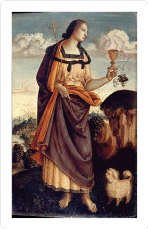Teacup dogs are the name for the most miniature breeds of dogs created by humans. They are the result of selective breeding or genetic modifications occurring within laboratories. Teacup dogs were created to serve as a decorative breed; their primary purpose is to perform on various shows or be human companions. Some small species can be trained to become service dogs. Their intelligence is underestimated since almost all teacup dogs can be easily trained.
Appearance
As the name suggests, teacup dogs are the smallest among the dog breeds. They are similar to puppies and stay this size and appearance throughout their lives. Moreover, they are not classified or registered by the AKC as dog breeds since they are the smallest of the Toy dog litter. For this reason, they are deemed unhealthy by the dog breeders. Teacups are approximately under 6 pounds and under 17 inches tall, which is why they are very fragile throughout their lives.

History
Overall, small dogs appeared in the Middle East approximately 12 000 years ago from a grey wolf breed that is generally smaller than their counterparts throughout the world (Parker et al. 702). All small dogs typically weighed under 20 pounds at that time; however, due to the domestication, the size of small dogs significantly changed through evolution (Freedman and Wayne 290). Moreover, by breeding the most miniature dogs between themselves, humanity got the breeds known as toy dogs, which later produced teacup dogs.
Health Complications
As the puppies deemed as teacup are the smallest of their litter, the health complications might appear as well. The doctors claim that the smaller the puppy is, the more likely it is to get hypoglycemia, breathing problems, heart problems, arthritis, and hydrocephalus (Jeppsson 434). Moreover, such dogs are more likely to possess blindness from their birth, which can significantly harden their future life. Furthermore, teacups are at high risk of having teeth or gum issues, where their baby teeth do not fall off by themselves, and instead, they have to be removed in vet clinics (Jeppsson 432). Additionally, teacup dogs do not possess the ability to properly regulate their body temperature, especially when it is colder, which is why it is not uncommon to see such breeds in clothing.
The ‘True’ Breeds
The most popular of the teacup breeds are the Chihuahua, which is also the most nervous dog. These animals do not like loneliness, and they are highly tied to their owners, so it is hard to leave them alone at home. They are easy to train, but they also need a lot of attention. Maltese is another famous teacup dog, which is known to possess a little liking in strangers. On the other hand, Poodles are known to be the most intelligent dogs among the teacup breeds, with the need to be constantly groomed. Pomeranian is a dog with a barking problem, which can be easily trained since they are relatively intelligent and playful. As a hunting dog breed in the past, Yorkie has a lot of confidence and the ability to adapt to different situations (Urbanik and Johnston 120). Shin Tzu, the last of the true teacup breeds, possesses a long coat that can be styled in many ways. Moreover, these dogs are not energetic and calmer, so they are the best breed for children.

Art
Throughout history, small dogs made an appearance in art all over the world. As a symbol of loyalty and faithfulness, they appeared as an allegory of fidelity and gentle nature. Moreover, tiny teacup dogs usually symbolized wealth within paintings since they had to be extremely rich to acquire such a breed (Freedman 86). Within the Middle Ages’ images, a small dog on the woman’s lap or near the woman symbolized marital fidelity, a vital component of family relations.

Works Cited
Freedman, Adam H., and Robert K. Wayne. “Deciphering the Origin of Dogs: From Fossils to Genomes.” Annual Review of Animal Biosciences, vol. 5, no. 1, 2017, pp. 281–307.
Freedman, Adam H., et al. “Evolutionary History, Selective Sweeps, and Deleterious Variation in the Dog.” Annual Review of Ecology, Evolution, and Systematics, vol. 47, no. 1, 2016, pp. 73–96.
Jeppsson, Sofia. “Flourishing Dogs: The Case for an Individualized Conception of Welfare and Its Implications”. Journal of Agricultural and Environmental Ethics, vol. 29, 2016, pp. 425–438.
Parker, Heidi G., et al. “Genomic Analyses Reveal the Influence of Geographic Origin, Migration, and Hybridization on Modern Dog Breed Development.” Cell Reports, vol. 19, no. 4, 2017, pp. 697–708.
Urbanik, Julie, and Connie L. Johnston. Humans and Animals: A Geography of Coexistence. ABC-CLIO; Illustrated Edition, 2017.